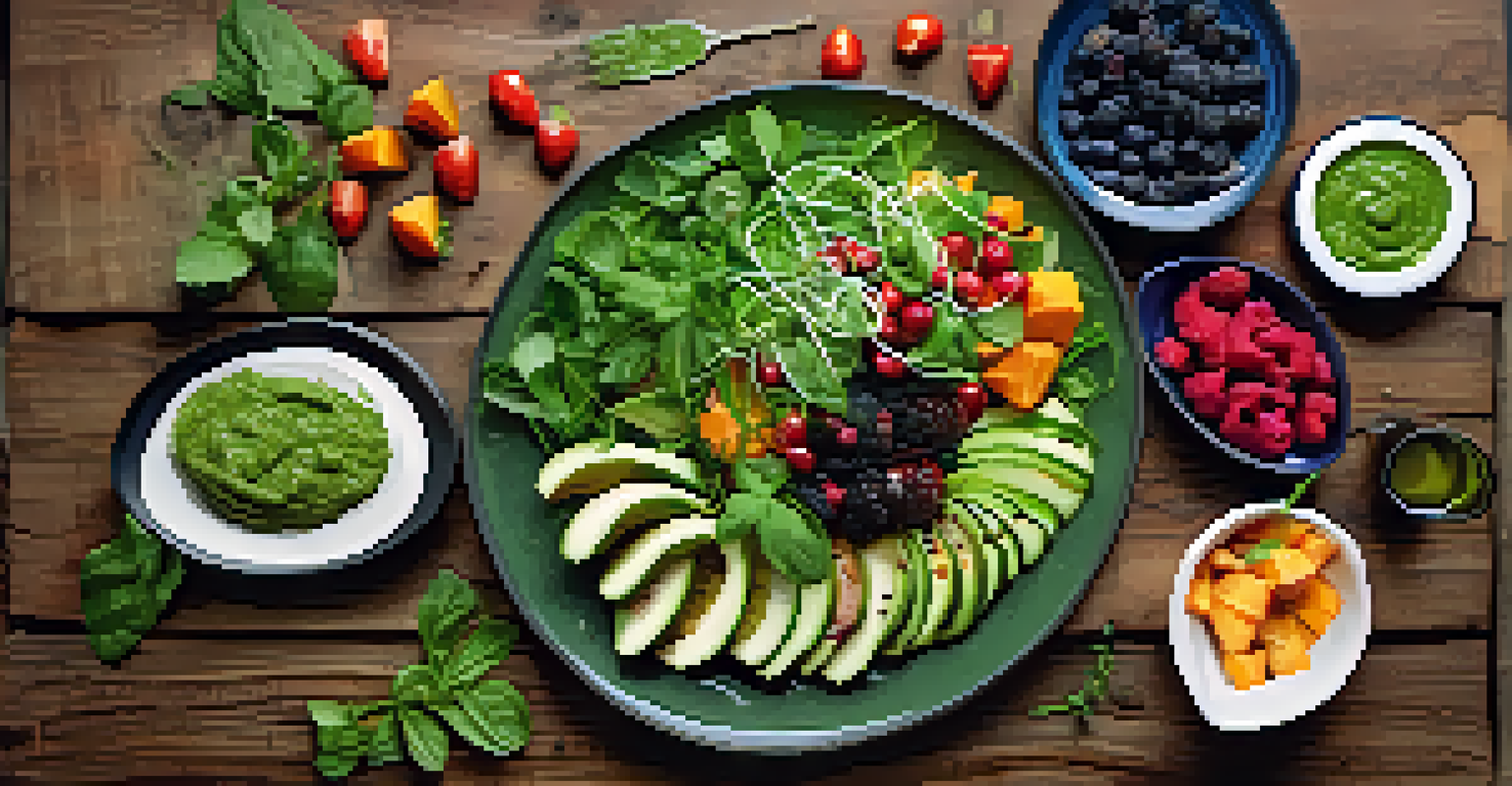Vegan Meal Planning: Incorporating Homegrown Ingredients

The Joy of Growing Your Own Vegan Ingredients
There’s something incredibly satisfying about growing your own food. Imagine stepping into your garden and plucking fresh tomatoes, basil, or spinach right before dinner. Not only does home gardening provide you with fresh produce, but it also connects you to the earth and the process of food cultivation.
To forget how to dig the earth and to tend the soil is to forget ourselves.
Homegrown ingredients are often more flavorful and nutritious than store-bought options. When you harvest your fruits and vegetables at their peak ripeness, you’re not just ensuring better taste; you’re also maximizing their health benefits. Plus, knowing exactly where your food comes from adds a layer of trust and satisfaction to your meals.
Starting a small garden can be straightforward, even for beginners. Whether you have a backyard or just a balcony, you can grow herbs, leafy greens, or even tomatoes in pots. This not only enhances your meals but can also be a fun and rewarding hobby.
Planning Your Vegan Meals Around Seasonal Produce
Incorporating seasonal produce into your vegan meal planning can elevate your dishes while also respecting nature's cycles. Seasonal fruits and vegetables are generally fresher, tastier, and more affordable. By aligning your meals with what's currently in season, you’re embracing the natural rhythm of the earth.

For instance, in the summer, you might find an abundance of zucchini, cucumbers, and berries. These ingredients can inspire refreshing salads or smoothies. Meanwhile, autumn brings a bounty of root vegetables and squashes, perfect for hearty soups and stews.
Grow Your Own Flavorful Ingredients
Cultivating your own food not only enhances flavor and nutrition but also connects you to the joy of gardening.
Using a seasonal calendar can be a great tool for planning your meals. It helps you anticipate what ingredients will be available, allowing you to create diverse and exciting menus that change throughout the year.
Creating a Weekly Meal Plan with Homegrown Goodies
A well-structured meal plan can make your week smoother and your meals more enjoyable. Start by listing out the homegrown ingredients you have on hand, and then brainstorm recipes that incorporate them. This not only minimizes waste but also encourages creativity in the kitchen.
The greatest gift of the garden is the restoration of the five senses.
For example, if you have an abundance of kale, you could plan for a kale salad, a smoothie, and a stir-fry. By thinking ahead, you can ensure that you’re using all your homegrown produce before it goes bad.
Don’t forget to include variety in your plan! Mixing different cooking methods and cuisines can keep your meals exciting and help you explore new flavors while making the most of your home garden’s bounty.
Batch Cooking: Simplifying Your Vegan Meal Prep
Batch cooking is a lifesaver for busy individuals looking to maintain a healthy, vegan diet. By preparing large quantities of meals at once, you can enjoy delicious, home-cooked food throughout the week without the stress of daily cooking.
Imagine spending a couple of hours on the weekend chopping vegetables, cooking grains, and blending sauces. You can then portion these into containers for quick lunches and dinners. This method not only saves time but can also help you stick to your meal plan.
Plan Meals with Seasonal Produce
Aligning your vegan meals with seasonal ingredients can elevate flavors and help you embrace nature's cycles.
When you batch cook, consider making versatile dishes that can be used in multiple ways. For instance, a big pot of vegetable chili can be served over rice, used in burritos, or topped on baked potatoes, ensuring you don’t get bored with your meals.
Incorporating Herbs and Spices for Flavorful Meals
Herbs and spices can transform a simple vegan meal into a culinary delight. By growing your own herbs like basil, cilantro, or thyme, you can easily add fresh flavors that elevate your dishes without adding extra calories.
Consider making a fresh herb pesto or a spicy chimichurri sauce using your homegrown ingredients. These can be drizzled over roasted vegetables or used as a marinade for grilled tofu, enhancing the taste of even the simplest meals.
Experimenting with different spices can also introduce exciting flavors. Cumin, paprika, or turmeric can add depth to your dishes. Combining these with fresh herbs creates a beautiful harmony in your meals, making vegan dining vibrant and enjoyable.
Sustainable Practices in Your Home Garden
Practicing sustainability in your home garden not only benefits the environment but can also enhance the quality of your produce. Techniques like composting, using organic fertilizers, and practicing crop rotation can yield healthier plants and a more abundant harvest.
By composting kitchen scraps and garden waste, you create nutrient-rich soil that helps your plants thrive. This reduces waste and gives back to the earth, closing the loop in your food journey.
Batch Cooking for Busy Days
Preparing large quantities of meals in advance simplifies cooking and ensures you enjoy healthy, home-cooked dishes throughout the week.
Additionally, consider planting companion plants that naturally deter pests or attract beneficial insects. This eco-friendly approach can reduce the need for chemical pesticides, ensuring your homegrown ingredients are as clean and wholesome as possible.
Enjoying the Community: Sharing Your Bounty
Sharing your homegrown produce not only brings joy to others but also strengthens community ties. Whether it’s exchanging vegetables with neighbors or participating in local farmers’ markets, sharing fosters connections and spreads the love of healthy eating.
Imagine hosting a potluck dinner where everyone brings a dish made from homegrown ingredients. Not only does this create a diverse and delicious meal, but it also inspires others to start their own gardens and explore vegan cooking.

Through sharing, you can also learn from others’ gardening experiences. Engaging with local gardening groups or online communities can provide valuable tips and tricks, making your homegrown journey even more fulfilling.